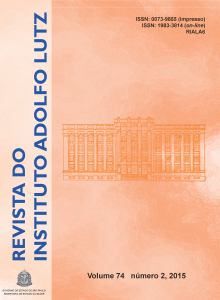Study on the histological identity of soy products (Glycine max L.)
Keywords:
soy, by-products, histology, identification fraud
Abstract
From the soya beans are obtained various by-products such as flour, meal, textured protein and oil, which are regularly used in food formulations such as cookies, breads, chocolates, among others. During the food processing, the soya structure might be changed, and turning into hard to perform the histological identification of this vegetable in the food products. This study aimed at identifying the histological characteristics of different soy sub-products. Textured soy protein, defatted soy protein, soy-isolated protein and concentrated soy protein samples were provided by a soybean processor industry. These samples were investigated by means of histological analysis, according to the Official Methods of the Instituto Adolfo Lutz for detecting the presence of the characteristic histological elements. Among the four analyzed sub-products, the isolated soy protein only showed no characteristic histological elements. The concentrated soy protein showed the lowest amounts of histological elements in relation to the textured soy protein and the defatted soy protein. These findings will contribute to the soya-based products analyses concerning their composition, in order to identify the potential fraud or contamination.
Published
2016-03-28
How to Cite
Mattos, E. C. de, Atui, M. B., Silva, A. M. da, Ferreira, A. R., Nogueira, M. D., Soares, J. dos S., & Marciano, M. A. M. (2016). Study on the histological identity of soy products (Glycine max L.). Revista Do Instituto Adolfo Lutz, 74(2), 104-110. Retrieved from https://periodicoshomolog.saude.sp.gov.br/index.php/RIAL/article/view/33462
Issue
Section
ORIGINAL ARTICLE










